Located in the north of Beijing, Shichahai is consisted of three lakes, Qianhai, Xihai and Houhai. Shichahai has 10 temples around it, hence the name Shichahai (Cha means temple in Chinese). With green waves and weeping willows at the bank, Shichahai becomes one of the popular attractions in Beijing. It has many well-preserved residences and gardens around because it has been a business center of ancient Beijing city since Yuan Dynasty (1206-1368).
With the development of hundreds of years, Shichahai combines different cultures of all estates from emperors to common people. The abnormity but dense Hutongs and Quadrate Yards around the lake represent the culture and history of ancient Beijing. Like pearls sprinkle the lake, the around natural scapes and historical sites reflect the style and features of ancient Beijing. Some well-known attractions are the Prince Gong Mansion, the Silver Ingot Bridge and Yandaixie Street (Tobacco Pipe Lane); the bar street here are popular among locals and tourists from in and abroad. In 1992 the municipal government of Beijing declared the district a "Historical and Cultural Scenic District".
Travelling in Shichahai, you can enjoy the Hutongs of ancient Beijing by pedicab; or view the three lakes' sights by boat; you can also ride a bike to explore absorbing culture of Beijing.
 |
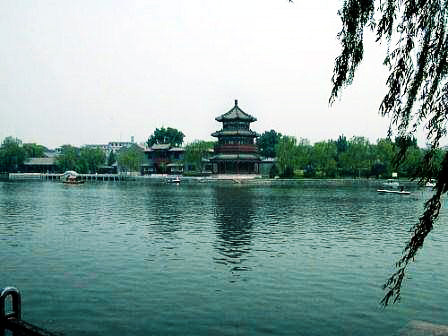 |
| Shichahai is consisted of three lakes |
green waves and weeping willows |
The configuration of streets in Shichahai area was first formed in Yuan Dynasty (1206-1368). Represented by Ya'er Hutong and Yandaixie Street (Tobacco Pipe Lane), most of the buildings in the area have a long history and show the typical features of Old Beijing's traditional architectures. Nowadays, lots of folk-customs are still existed in the area, like fishing, swimming, boating and playing chess. Shichahai has over 40 sites of historical relics, most of which have great importance to the development of Beijing city's constructions, politics and culture.
In summer, it is a great experience when boating in the lake; in winter, the area becomes a skating rink. Now the area has become a well-known bar street which attracts lots of locals and tourists from in and abroad.
 |
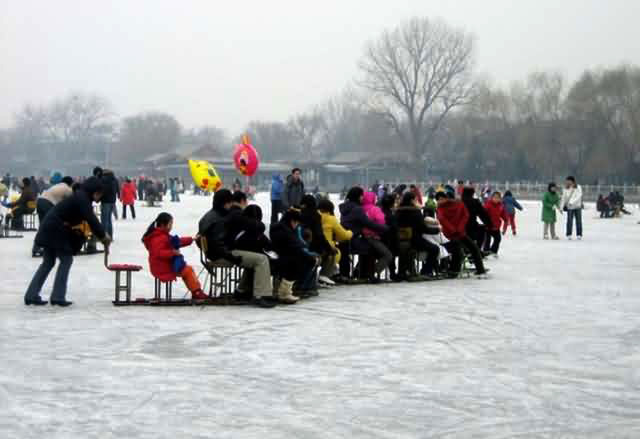 |
| Night View of Shichahai |
in winter, the area becomes a skating rink |
Prince Gong's mansion
Situated at the northwest corner of Shichahai, Prince Gong's Mansion is one of the most exquisite and best-preserved royal mansions in Beijing. It has a total area of 60,000 square meters (15 acres) and is located near Shichahai Lake, to the northwest of the Forbidden City. Built in 1777, Prince Gong's Mansion was originally the private residence of He Shen, a favorite minister of Emperor Qianlong of the Qing Dynasty (1644-1911). In 1851, Emperor Xianfeng assigned it to his brother Prince Gong. It is his name that is currently given to the compound.
The dwelling is a traditional courtyard mansion of a style that was very popular in imperial Beijing. Just over half of this is the residential portion, while the remainder is devoted to an ornamental garden to the rear. Two stone lions guard the main gate, and magnificent buildings stand to the fore of the mansion. On the wall of the main hall hangs a plaque inscribed with three characters "Bao Guang Shi" in calligraphy by Emperor Xianfeng.
The living quarters stand within three sets of courtyards occupying a central, eastern and western spot. The main section is comprised of the central hall, a rear hall, and an extended pavilion that has some 40 rooms. The construction and materials used are similar to those of the Ningshougong (Palace of Tranquil Longevity) in the Forbidden City. Each of the western and eastern sections contains three smaller courtyards. These grand and exquisite buildings are a vivid reminder of the pageantry and splendor that was so much part of China's imperial past.
The garden, surrounded by artificial mountains, is known as Jincui Yuan, and is very attractive because of its layout and distinct design. It covers an area of 28,000 square meters (6.9 acres) and includes twenty scenic spots, each unique with its own characteristics. The entrance via a cavern brings you into a spacious yard. A high, but graceful, rockery in the center greets visitors. There are mountain peaks, ponds, caves, studies and pavilions distributed throughout the garden. The 'Western-Style Gate,' the 'Grand Theater House' and the 'fu' Stele found in the garden are referred to as the 'Three Unique Features of Prince Gong's Mansion'.
To help visitors gain a better understanding of the culture attached to the mansion, the administration of Prince Gong's Mansion has converted Bat Hall into a teahouse. The visitors' program includes a full tour of the mansion, tea drinking, observing the exquisite art of the tea ceremony, sampling Beijing style treats, and enjoying folklore performances, all of which evoke an enthusiastic response. There is also an exhibition of the history of the Qing Dynasty, including replicas and photos of cultural relics.
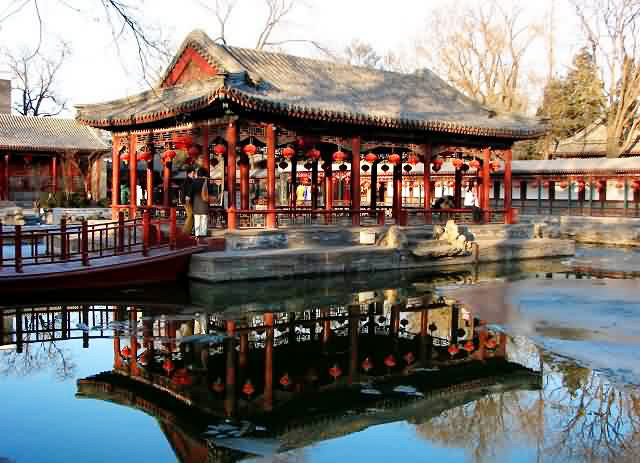 |
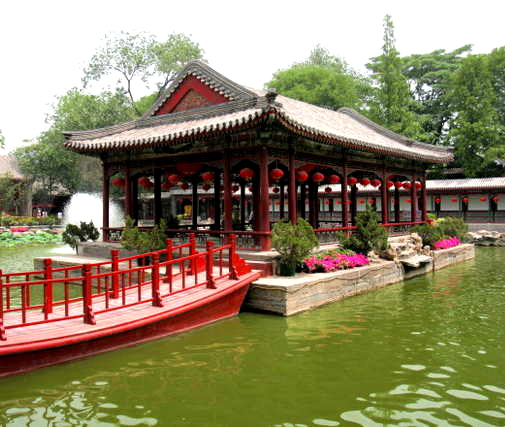 |
| Prince Gong's mansion |
traditional courtyard mansion |
Silver Ingot Bridge (Yinding Bridge)
Shaped in silver ingot, the Silver Ingot Bridge joins Qianhai and Houhai of Shichahai area. It is in a length of 12 meters (39.36 ft), a width of 7 meters (22.93 ft) and a height of 8 meters (26.24 ft). It looks like a silver ingot crossing the lake, so it got the name "Silver Ingot Bridge".
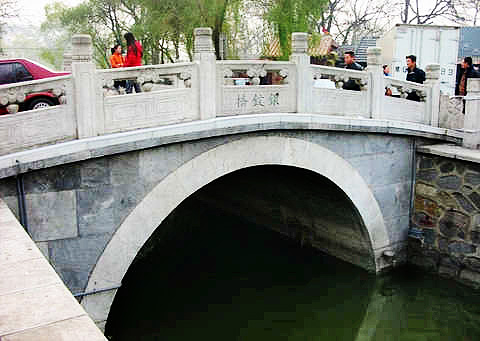 |
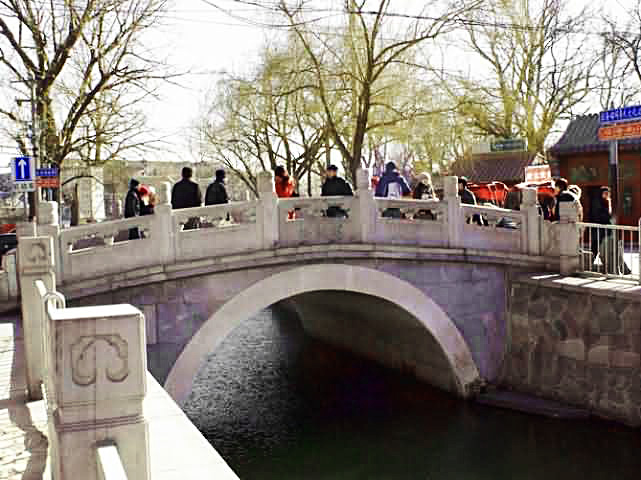 |
| Silver Ingot Bridge |
looks like a silver ingot crossing the lake |
Yandaixie Street (Tobacco Pipe Lane)
Yandaixie Street, also named as Tobacco Pipe Lane, is one of the oldest streets in Beijing. It begins from Di An Men Wai street and intersects with Xiao Shi Pai Hutong and Yaer Hutong. It is in the direction of Northwest-Southwest with a length of 232 meters (760.96 ft). The street connects the three important tourist attractions: Di An Men, the Bell and Drum Tower and Houhai. As an entrance of Houhai, Yandaixie Street has become a channel which connects the ancient Beijing and present Beijing. Along with the development, the street now takes a new look after reconstruction. Ethnic shops and various bars and cafes are opened here which attract lots of tourists from in and abroad.
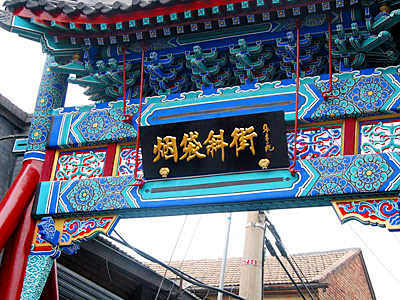 |
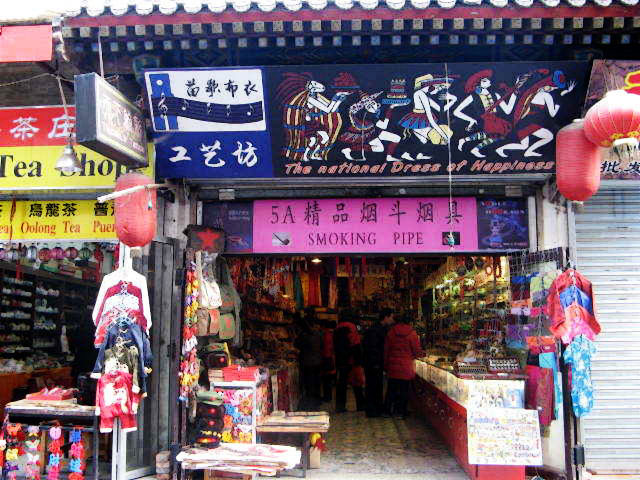 |
| Tobacco Pipe Lane |
Ethnic shops in Yandaixie Street |
Bar Street
The bar street is famous for its cross culture of classic and modern; tradition and fashion. Bars here are all in unique decoration. Lying in the traditional courtyard but revealing the trends of fashion, the bar street shows the big contrast but harmonization of the traditional and the present culture.
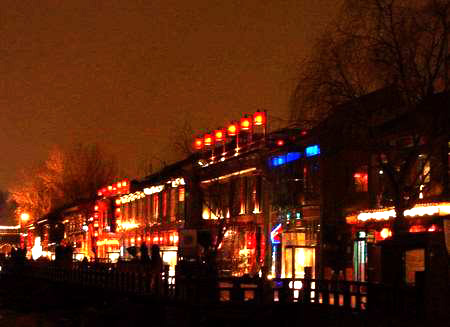 |
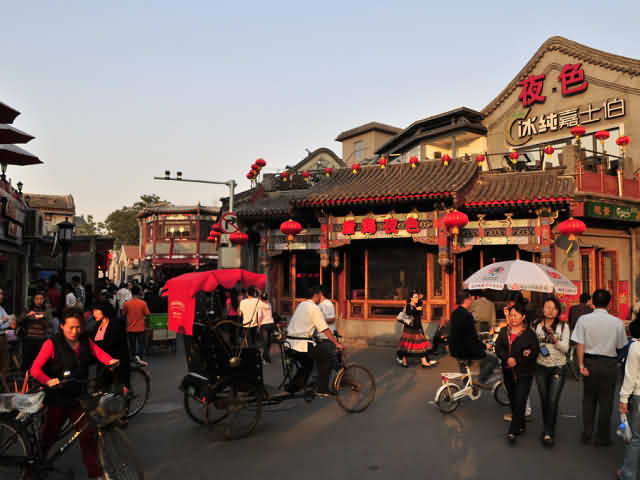 |
| the Houhai Bar Street is quite popular |
harmonization of the traditional and the present culture |


















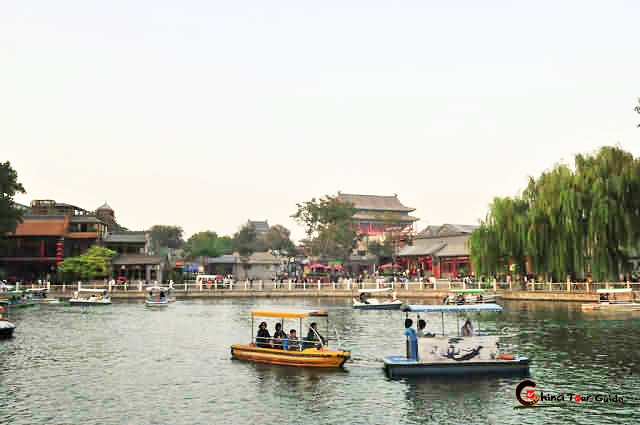







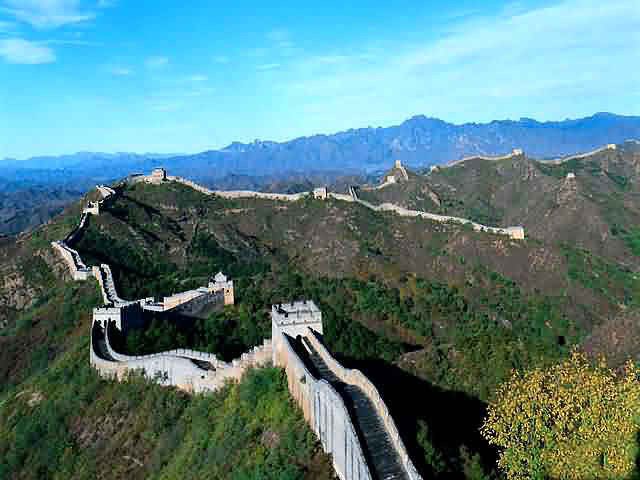
 More
China Tours
More
China Tours